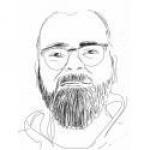
In the article, Samuelson was quoted for saying that “the girls at Sweet Briar” would not be able to treat some of the most difficult chapter-ending questions, while “honor students at Princeton” would. This remark did not go unnoticed. Many female Professors, mostly teachers in Women’s colleges, wrote letters of protests. None of the latter failed to mention that they had used several of the first seven editions as former students or current instructors.
The interesting question is not to know whether Samuelson was male-chauvinistic here. None of the complaining Professors thought it this way, indeed. However, there are many more interesting issues to be addressed.
- what were the specificities of economic education in women’s colleges? How did it change from the early postar period to the late 1960s? Was it affected by the rise of feminist movements?
- was there something particularly emancipating in the study of economics by women in the early postwar period? Was the image of the discipline more or less liberal than other social sciences?
- was Samuelson’s Economics a better suited textbook for using in women’s colleges than its competitors? And if so, why?
- what was the use of the economics principles’ class? Were the students majors in economics or just taking an economics class as part of a larger program? Did they pursue economic education afterwards? For what kind of job?
Though there are few researchers who are interested in women’s issues in the history of economic thought (Evelyn Forget immediately comes to mind), it is clear that this topic is worth investigating.
EDIT: I just saw that the March 2011 issue of Oeconomia had a symposium on “Women in Economics”, with a paper by Evelyn Forget. This is certainly worth reading.



